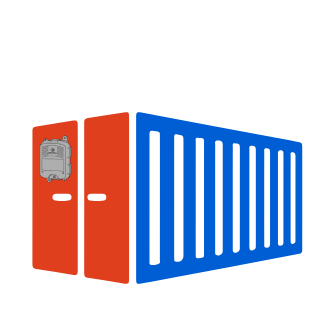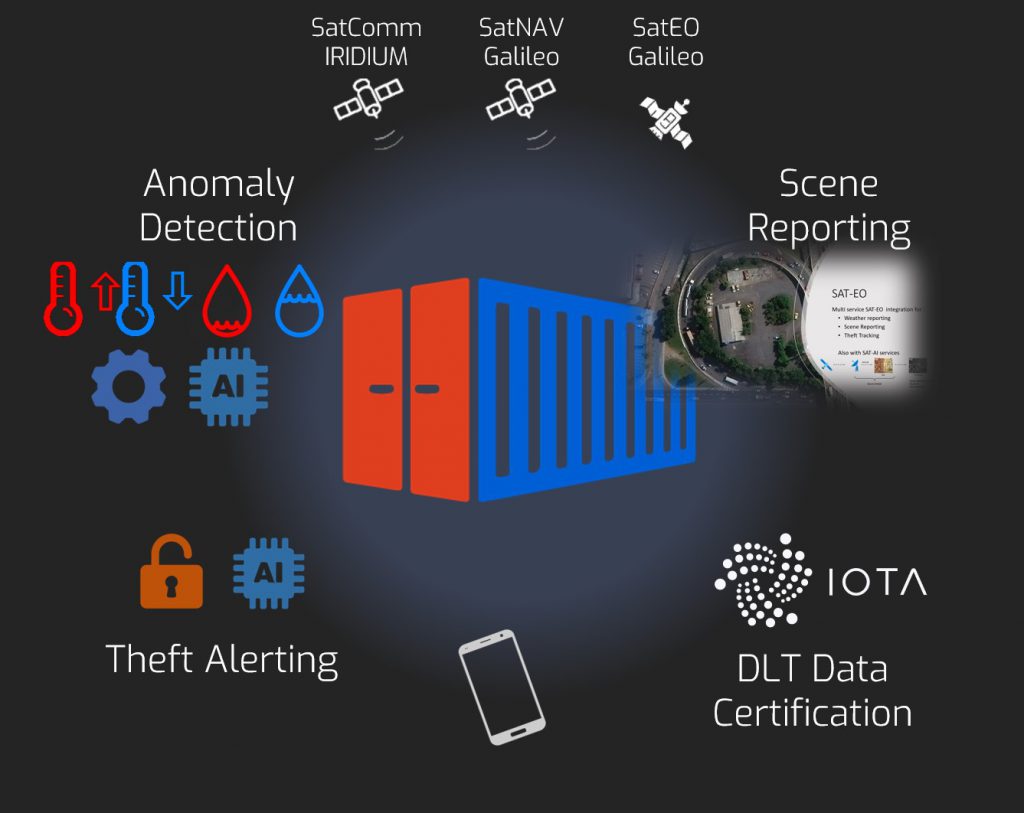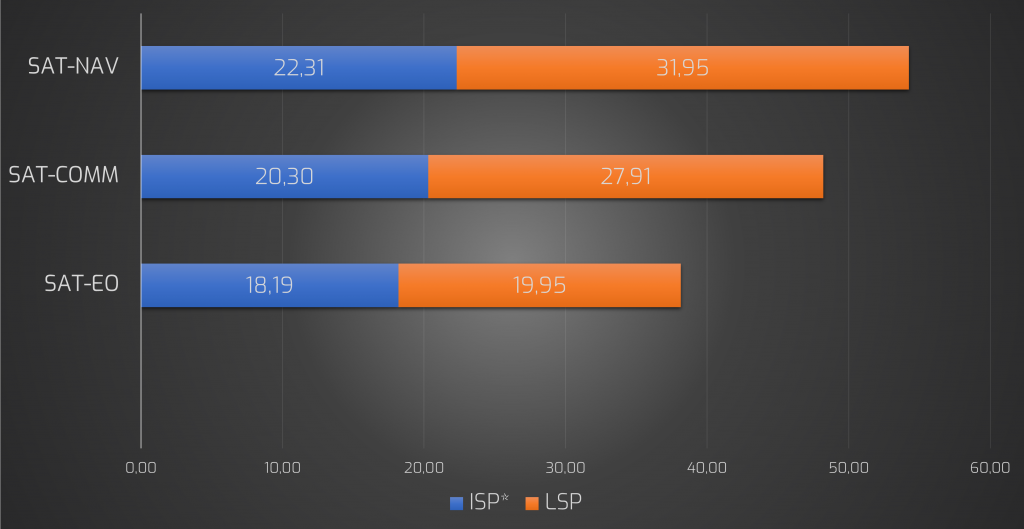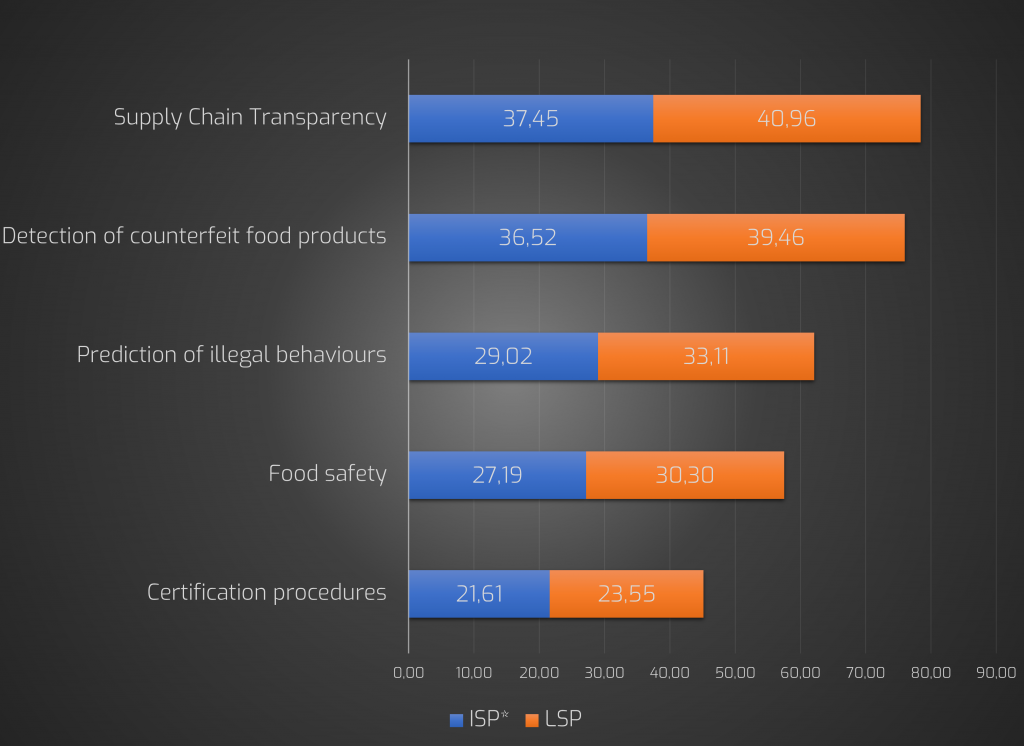
Satis(f)action project
The project
New generation satellite technologies (SatNav, SatCom, SatEO) are blended with the latest data intelligence and certification technologies (Edge AI, IoT and DLT) to offer next generation Remote Container Monitoring services (Monitoring-as-a-Service), hence increasing overall food supply chain safety and reliability, in the pursuit of the highest possible final customer “satisfaction”.
The purpose
Provide all users with services for the detection and prevention of food (and beverage) fraud by
tracing with the highest precision the position of the reefers containing perishable food
providing alerts whenever temperature or humidity exceeds allowed ranges, cargo falls and on unexpected door openings which are critical to prevent food frauds, also in case of transports in remote lands or in deep ocean
merging and certificating this information with other relevant shipping documents/certifications/forms and satellite information
These services shall be of high relevance for both Logistics Service Providers (LSPs) in charge of the safety and of the operations of shipping, and for Insurance Service Providers (ISPs) who shall profit from the intrinsic certification of validity provided by Distributed Ledger Technologies on all the data available and exchanged between Parts and devices, throughout the INCOTERMS chain. Such data might as well include satellite, high-resolution images of the scene relevant to any eventual claim on the insured shipment/cargo
Users and their needs
Given the global nature of cargo container shipping, both Insurance Service Providers and Logistics Service Providers operate worldwide, hence comprehend national and – above all – international players. While LSPs are generally required by Customers to have a finer control on their shipments, enabling them to intervene in case of adverse events, ISPs want to run less risks and reduce time and costs to understand on whom put the blame for a claim
Although from different perspectives, all of them need anyway
Service concept
New generation satellite solutions power four cutting edge services
Anomaly Detection Services (ADS) improved SatNav and SatCom functionalities are key to have and transmit even from “in-the-middle-of-nowhere” information of anomalies detected by the Edge AI functionality of the Premium ZTD device including precise positioning. If a fault or an alert is detected whilst in a desert or ocean, spare parts and technical services may be made ready at arrival
Theft Alerting Services (TAS) accurate location detection and just in time communication will clearly be even more crucial should freight owners and police forces need to locate where fraudulent behaviours (such as unexpected door opening) are alerted. If duly communicated on time, police and control forces may intervene and avoid the rerouting usually conducting to food fraud
Scene Reporting Services (SRS) & Data Certification Services (DCS) combining and aggregating information from multiple data and imagery sources is going to be key for the policy underwriting, claiming and certification services offered for ISP providers. SatEO imagery may clearly report weather conditions, environmental hazards and logistical layout of places and locations where events have happened

Space added value
Here is the evaluation of the relevance attributed by users to each ESA service, elaborated through the data extracted from the filled surveys

SAT-NAV is the service perceived as most relevant, thanks to the several advantages provided by an increased precision in localization. This aspect is of the outmost relevancy for the traceability of food, with a special attention to raw materials for the F&B industry
SAT-COMM is the second one and guarantees the benefits of the solution even when the goods are “in the middle of nowhere”
SAT-EO ranks third, although we are confident that the impact of high resolution EO images is going to make users re-consider the value carried by aerial, high-resolution images

This is the value enabled by ESA services and attributed by interviewed users to the Application Areas addressed by this study, compared to what is nowadays obtainable with the current ZTD
The blue area defines how the actual ZTS “fits” within the space defined by the relevance attributed to the feature by interviewed users. Green area shows the tangible improvement on Application Areas achievable by means of the new ESA powered solution
Current status
Two panels of 30 Logistics and around 13 Insurance Service Provider users have been defined
As of today 62% of ISPs and 47% of LSPs returned the filled survey
Near all of them happens to use monitoring products or services, depending on their customers’ requests
Overall, most considered application areas are definitely “Supply Chain Transparency” (78,42) and “Detection of counterfeit food products” (75,98), both being the most relevant areas for both ISPs and LSPs. This makes sense because for LSPs is vital to be informed of everything might have an operational value to better control the cool chain and ensure the full traceability of food, and for ISPs is critical to have transparency in the nodal points where the risks are transferred by players of the intermodal chain
Third comes “Prediction of illegal behaviours” (62,12) and we read this as more attention to internal possible weaknesses of the cool supply chain, rather than to external factors such as activities “potentially” leading to food frauds
“Food Safety” (57,49) follows not too far while “Certification procedures” ends the rank
